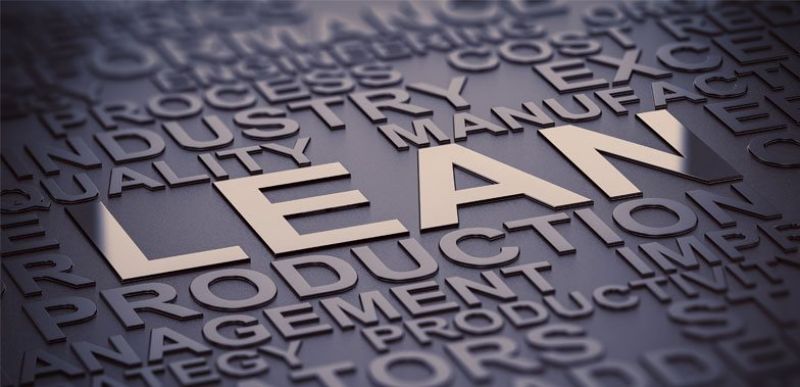
In the ever-evolving landscape of electronics engineering services, efficiency, quality, and innovation are the cornerstones of success. To navigate this dynamic terrain, the adoption of lean manufacturing best practices has become increasingly imperative. Lean manufacturing, rooted in the elimination of waste and continuous improvement, offers a systematic approach to achieving excellence in electronics engineering.
In this comprehensive guide, we will delve into the world of lean manufacturing and unveil ten indispensable best practices tailored specifically for electronics engineering services. These practices, often referred to as “Lean Manufacturing Best Practices,” are designed to optimize processes, reduce costs, enhance product quality, and fuel innovation in the realm of electronics. So, fasten your seatbelts as we embark on a journey to uncover the transformative power of lean manufacturing in electronics engineering.
Understanding Lean Manufacturing
Lean manufacturing is not merely a set of tools; it’s a philosophy that reshapes the way we think about production, processes, and waste. At its core, lean manufacturing strives for the efficient use of resources while minimizing waste. Before we dive into the best practices, it’s crucial to grasp the fundamental principles that underpin lean manufacturing.
Lean Manufacturing Principles:
- Value: Recognizing what customers value and aligning all actions and processes to deliver that value.
- Value Stream: Identifying the value stream—the sequence of activities that create value—and optimizing it.
- Flow: Creating a seamless flow of work through processes to minimize interruptions and delays.
- Pull: Establishing a pull system where products are produced based on actual demand rather than forecasts.
- Perfection: Pursuing perfection through continuous improvement, relentlessly eliminating waste and inefficiencies.
With these principles as our guiding lights, we embark on a journey to explore the ten essential lean manufacturing best practices tailored for electronics engineering services.
Importance of Lean Manufacturing in Electronics Engineering
In the rapidly evolving landscape of electronics engineering, staying competitive means embracing change and seeking new ways to enhance efficiency and quality. Lean manufacturing is more than just a methodology—it’s a strategic approach that holds immense importance in the electronics industry for several compelling reasons:
-
Cost Reduction:
Lean practices help eliminate waste, reduce excess inventory, and streamline processes, ultimately leading to significant cost savings for electronics engineering services.
-
Improved Product Quality:
By focusing on continuous improvement and error prevention, lean manufacturing enhances product quality and reduces defects, critical in electronics manufacturing where precision is paramount.
-
Enhanced Flexibility:
Lean principles enable electronics engineering services to adapt swiftly to market changes and customer demands, ensuring agility in a rapidly evolving industry.
-
Resource Optimization:
Efficient resource allocation and utilization, including manpower and equipment, are central to lean manufacturing, optimizing resource deployment for better outcomes.
-
Innovation Catalyst:
A culture of continuous improvement and employee involvement in lean practices fosters innovation and problem-solving, driving advancements in electronics engineering.
-
Customer Satisfaction:
Lean manufacturing’s customer-centric approach ensures that electronics products meet or exceed customer expectations, leading to higher satisfaction levels.
6 Lean Manufacturing Best Practices
Best Practice 1: Value Stream Mapping
Value stream mapping is a fundamental lean manufacturing tool that plays a pivotal role in identifying opportunities for improvement within electronics engineering services. It offers a comprehensive visual representation of the processes involved in delivering value to customers. Here’s a closer look at this critical practice:
What Is Value Stream Mapping?
Value stream mapping is the process of creating a visual representation, typically in the form of a map or diagram, that illustrates every step in the production or service delivery process. It delineates both value-adding and non-value-adding activities, helping organizations see where efficiencies can be gained.
Why Is It Important?
- Identifying Waste: Value stream mapping exposes inefficiencies and waste in the process, such as excess inventory, delays, and overproduction.
- Improvement Focus: It provides a clear focal point for process improvement efforts, ensuring that changes target areas with the most significant impact.
- Enhanced Communication: It facilitates communication and understanding among cross-functional teams, helping everyone grasp the bigger picture.
How to Create a Value Stream Map
Creating a value stream map involves these key steps:
- Select the Value Stream: Choose a specific process or product line to map.
- Gather Data: Collect data on the current state of the process, including cycle times, lead times, and inventory levels.
- Create the Current-State Map: Draw the current-state value stream map to visualize the existing process.
- Identify Opportunities: Analyze the map to identify areas of waste and opportunities for improvement.
- Design the Future-State Map: Develop a future-state value stream map that represents the ideal, optimized process.
- Implement Improvements: Execute the changes outlined in the future-state map.
- Continuously Improve: Regularly review and update the value stream map to drive ongoing improvements.
Best Practice 2: 5S Workplace Organization
The 5S methodology, rooted in Japanese principles, is a cornerstone of lean manufacturing and holds immense value in the world of electronics engineering services. It focuses on optimizing workplace organization and efficiency through five key pillars, all starting with the letter “S”:
1. Sort (Seiri):
The first step involves sorting and decluttering the workspace. Remove unnecessary items, tools, or materials that do not contribute to the immediate tasks at hand. A clutter-free workspace is more efficient and minimizes distractions.
2. Set in order (Seiton):
Once items are sorted, organize them in a logical and ergonomic manner. Everything should have a designated place, making it easy for employees to find what they need quickly. This minimizes search time and ensures tools and materials are readily available when required.
3. Shine (Seiso):
This step emphasizes cleanliness and maintenance. Regularly clean work areas and equipment to prevent dirt, dust, or debris from affecting operations. Well-maintained equipment operates more efficiently and has a longer lifespan.
4. Standardize (Seiketsu):
Establish standardized processes and procedures for maintaining the first three pillars (Sort, Set in order, Shine). Standardization ensures consistency and sustainability of the improvements made, making it easier to maintain a clean and organized workspace over time.
5. Sustain (Shitsuke):
The final step is about fostering a culture of continuous improvement and discipline. Employees should be encouraged to adhere to the 5S principles and regularly review and refine the processes. Sustaining the improvements achieved is key to long-term success.
Why 5S Matters in Electronics Engineering Services
- Efficiency: Organized workspaces reduce wasted time searching for tools or materials, allowing employees to focus on productive tasks.
- Error Reduction: A clean and organized environment minimizes the risk of errors or defects in electronics manufacturing, where precision is critical.
- Safety: Safety is paramount in electronics engineering. An organized workplace promotes safety by reducing the chances of accidents and hazards.
Best Practice 3: Kanban System
Originating from Japan and translating to “visual card” or “visual signal,” the Kanban system is a powerful lean manufacturing tool that promotes efficient production and inventory management within electronics engineering services.
Understanding the Kanban System
At its core, the Kanban system is about visual management. It involves the use of cards or signals to represent tasks, parts, or materials in a production process. Here’s how it works:
- Kanban Cards: Each task, part, or material is represented by a Kanban card. These cards include essential information such as item type, quantity, and destination.
- Visual Signals: The Kanban cards are placed in a visible location within the workspace, often on a Kanban board. When a task is completed or materials are used, the corresponding Kanban card is moved to the next stage or replenishment is triggered.
Key Benefits of the Kanban System
- Reduced Overproduction: Kanban prevents overproduction by ensuring that items are only produced or replenished when there is a specific demand for them.
- Efficient Resource Allocation: It optimizes the allocation of resources, ensuring that work centers or teams are not overwhelmed or underutilized.
- Inventory Control: By regulating inventory levels, the Kanban system minimizes excess stock and the associated storage costs.
Kanban in Electronics Engineering Services
In electronics manufacturing, where component availability and quality control are critical, the Kanban system ensures a smooth and efficient production flow. It’s particularly useful in managing the inventory of electronic components, preventing shortages, and maintaining optimal levels to meet production demands.
Best Practice 4: JIT (Just-In-Time) Production
Just-In-Time (JIT) production is a key lean manufacturing practice that revolves around producing items exactly when they are needed, neither too early nor too late. This approach minimizes inventory holding costs, reduces waste, and enhances overall efficiency in electronics engineering services.
Core Principles of JIT Production
- Demand-Driven: JIT production is driven by customer demand. Items are manufactured only in response to specific orders, eliminating the need for excessive inventory.
- Continuous Flow: Processes are designed for a continuous and smooth flow of materials and tasks. This reduces bottlenecks and delays in production.
- Takt Time: Takt time is the rate at which items need to be produced to meet customer demand. JIT production aligns with this time frame to ensure timely delivery.
Benefits of JIT Production
- Lower Inventory Costs: By producing goods as they are needed, electronics engineering services can reduce the costs associated with holding excess inventory.
- Reduced Waste: JIT production minimizes waste, including overproduction, excess inventory, and defects, aligning with the principles of lean manufacturing.
- Improved Responsiveness: Electronics engineering services can quickly adapt to changes in customer demand, market trends, or design modifications.
JIT in Electronics Engineering Services
In the electronics industry, where component availability and product lifecycles are critical factors, JIT production allows for flexibility and responsiveness. It ensures that electronic components are procured and assembled precisely when required, reducing the risk of obsolescence and excess inventory.
By implementing JIT production, electronics engineering services can achieve a delicate balance between fulfilling customer orders promptly and minimizing the costs associated with inventory holding and waste.
Best Practice 5: Poka-Yoke (Error Proofing)
In the world of electronics engineering services, precision is paramount. Poka-Yoke, a lean manufacturing practice that translates to “mistake-proofing” or “error-proofing,” plays a pivotal role in minimizing errors and defects.
Understanding Poka-Yoke
Poka-Yoke encompasses a range of techniques and mechanisms designed to prevent or detect errors in the production process before they result in defects or defects that reach the customer. Here’s how it works:
- Warning Mechanisms: These are devices or systems that issue a warning or alert when a potential error is detected. For example, a sensor may trigger an alert if a component is inserted incorrectly.
- Control Mechanisms: These mechanisms prevent an error from occurring or make it impossible to proceed if a mistake is detected. An example is a key that only fits into a lock one way.
Benefits of Poka-Yoke
- Error Reduction: By preventing errors at the source, Poka-Yoke minimizes the occurrence of defects in electronic components and assemblies.
- Consistency: It ensures consistent product quality, which is critical in electronics engineering services where precision and reliability are paramount.
Poka-Yoke in Electronics Engineering Services
In electronics manufacturing, even a minor error can lead to significant consequences, from malfunctioning electronic devices to safety hazards. Poka-Yoke mechanisms, whether through sensors, mechanical design, or software checks, help ensure that errors are caught and corrected early in the production process.
Best Practice 6: Continuous Improvement (Kaizen)
Kaizen, often referred to as continuous improvement, is a foundational principle of lean manufacturing. It encourages a culture of ongoing refinement, innovation, and incremental progress—a philosophy that resonates deeply within the realm of electronics engineering services.
The Essence of Kaizen
Kaizen is more than a methodology; it’s a mindset that embraces the idea that even the smallest improvements, when accumulated over time, can lead to significant enhancements in efficiency, quality, and innovation. Key aspects of Kaizen include:
- Incremental Changes: Kaizen focuses on making small, manageable improvements continuously rather than seeking radical changes.
- Employee Involvement: Employees at all levels are encouraged to contribute ideas and participate in the improvement process.
- Data-Driven Decisions: Kaizen relies on data and metrics to identify areas for improvement and measure progress.
Benefits of Kaizen
- Sustainable Progress: By continually seeking ways to improve, electronics engineering services can sustain progress and adapt to evolving challenges.
- Employee Engagement: Kaizen fosters a sense of ownership and involvement among employees, leading to increased job satisfaction and a culture of innovation.
Kaizen in Electronics Engineering Services
In the electronics industry, where technology advances rapidly and customer demands change frequently, Kaizen is a powerful tool for staying competitive. Electronics engineering services can leverage Kaizen to fine-tune processes, optimize workflows, and ensure that product designs and manufacturing methods remain at the forefront of innovation.
Conclusion
In the ever-evolving landscape of electronics engineering services, the implementation of lean manufacturing best practices is not just a choice—it’s a necessity. These practices are the compass guiding organizations toward excellence, efficiency, and customer satisfaction.
By embracing these ten lean manufacturing best practices, electronics engineering services can:
- Optimize Efficiency: Streamline processes to eliminate waste, reduce costs, and maximize resource utilization.
- Enhance Product Quality: Prioritize quality control and error prevention to deliver top-tier electronic products.
- Drive Innovation: Foster a culture of continuous improvement and collaboration, propelling the industry forward.
- Exceed Customer Expectations: Align all efforts with customer needs, ensuring satisfaction and loyalty.
As electronics engineering services embark on their journey to lean excellence, the path may be challenging, but the rewards are substantial. It’s a voyage toward a future where precision, efficiency, and innovation are not aspirations but everyday standards.
In this dynamic industry, the principles of lean manufacturing are not merely practices—they are the compass guiding organizations toward excellence, efficiency, and customer satisfaction.
Are you ready to embark on your lean journey and elevate your electronics engineering services to new heights? The choice is yours, and the future is bright.

